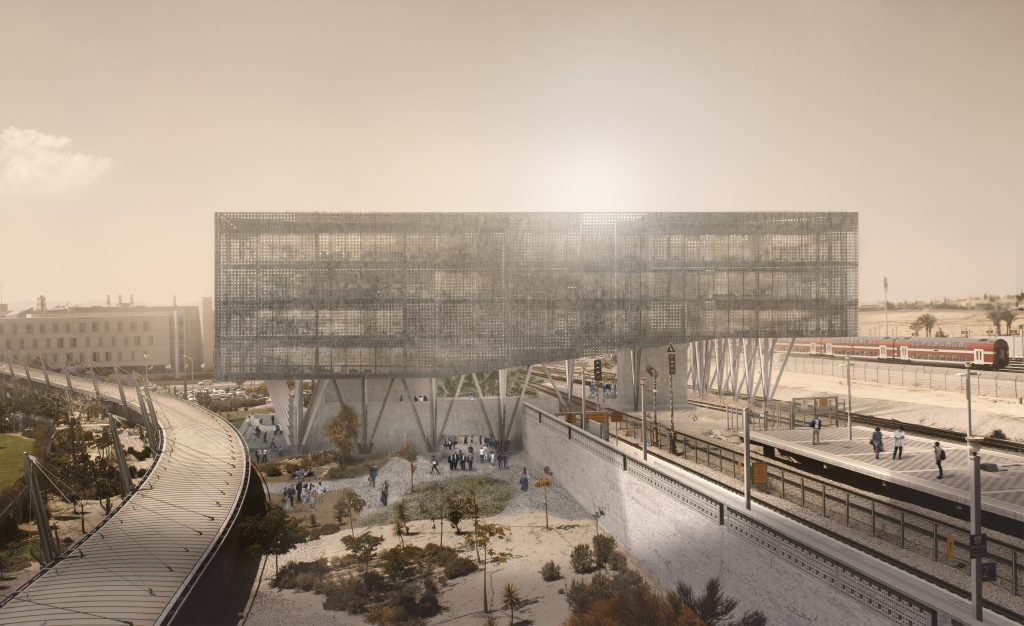
Africa;Israel

Matan Gal, Bezalel
The project examines the African-Israeli relations and responds to the neo-colonialism trend it expands over the “Black continent,” by establishing a railway infrastructure designed to leverage relations in a bi-directional and egalitarian manner.
With the end of WWII and the dissolution of colonial rule, there was a transitional period during which the State of Israel and the African countries gained independence. This historical narrative created a common ideological denominator, based on democracy, socialism, labor, and the spirit of nationalism.
In the following years, the African countries have undergone many upheavals that clouded on the amicable relations, which were replaced with suspicion and hostility. The crisis reached its peak with the Six-Day War, after which the African countries saw Israel as part of the “occupying countries”. The 1990s marked the renewal of diplomatic ties between Israel and African countries. Since then, the Israeli presence in Africa has been characterized by elements of crony-capitalism as part of the Neo-colonialist trend, and raised controversy over the extent of its interference in the continent.
With this history in mind, the project proposes a railway line stretching from Israel into the heart of Africa, based on the River Nile. The lack of roads and railways in Africa is considered its worst affliction, which hampers many of the aid missions and leaving many areas isolated. The establishment of the railway will use as a platform for transparent and free trade, accessible to a broad segment of the population, and a lever for development and entrepreneurship in the individual and collective hierarchy. The added value lies in the train’s ability of break the continent into fragments, bolster local values, and incorporate Israel as a link within this dynamic fabric.
The stations planning is based on a generic structure integrated in a specific territory from which the local values are derived, considering local needs, cultural traditions, construction methods, and materials.
The project presents feasibility for two stations: one in Juba, the capital of South-Sudan, and the other in Beer-Sheba, Israel. The comparative model highlights the tectonic similarities alongside the local values and the specific character of each place, and present a neutral observation about the reciprocal relations that are taking place around the train movement.
